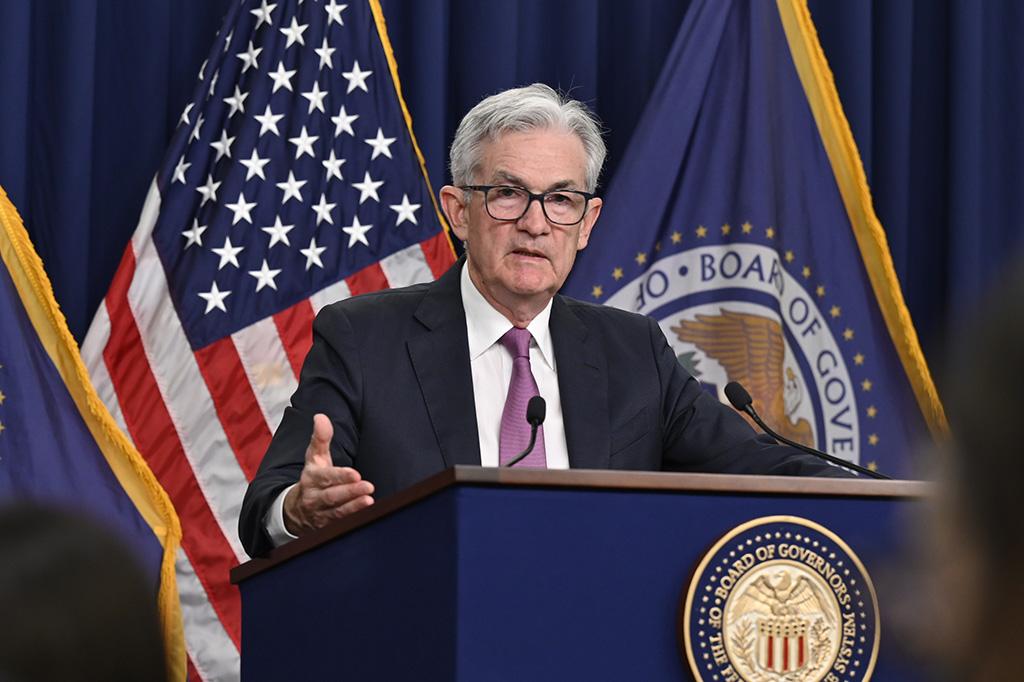The central bank of the U.S. Federal Reserve (or Fed for short) has been hiking interest rates this year to try to bring down inflation. Before addressing the economic consequences of this, a few words about central banks seems in order.
Regular retail and consumer banks do their own banking at central banks—making deposits and borrowing money. Central banks in turn regulate regular banks to ensure they remain solvent. But their most important function is changing interest rates to control inflation and unemployment.
Central banks set the rate at which they lend money to banks and control the rate that banks charge each other for loans. When inflation is high, central banks raise these rates. Banks then charge their customers more for loans. When unemployment is high, central banks cut the rates they charge banks. Banks then lower the rates they charge to businesses and consumers. Higher interest rates reduce spending and are intended to dampen inflationary pressures; lower rates increase spending, economic growth, and employment.
Currently U.S. unemployment is below 4 percent and near a 50-year low. Inflation, under 2 percent in the B.C. (before Covid) years, rose above 9 percent for the year ending in June 2022, its highest rate in four decades. Last year, the Biden administration provided many benefits to U.S. families (such as stimulus checks and a refundable tax credit) through the American Rescue Plan, helping them keep up with rising prices (see my article in the March/April Washington Spectator). These programs have now expired. As prices rise much faster than incomes, Americans struggle to pay their rent or mortgage, fill up their car with gasoline, and put food on the table.
The Fed has responded by increasing interest rates. From nearly 0 percent in January, it raised interest rates a total of 2.25 percentage points between March and July. And it expects to hike rates another percentage point before the year is out.
In hindsight, the Fed should have started raising rates last fall, when the U.S. unemployment rate was under 5 percent and declining and government spending programs were stimulating the economy. Erring on the side of keeping unemployment down, the Fed fell behind the inflation curve. Now it seeks to make up for lost time and deflect blame from the fact that it kept rates too low for too long.
Consumers are already feeling the consequences of this—higher mortgage rates, higher interest rates on auto and college loans, and higher rates on credit card balances. This is one downside of reducing inflation.
Many economists fear the Fed will push the U.S. into a recession, leading to the dreaded stagflation (high inflation and unemployment at the same time) that plagued the economy in the late 1970s and early 1980s. Frequently the Fed has gone too far when it starts raising rates. Fed Chair Paul Volcker overdid it in the late 1970s and early 1980s, leading to 10 percent unemployment. In the early 1990s, Fed Chair Alan Greenspan raised rates, creating a recession that helped end more than a decade of Republican rule in Washington. He raised rates again in 2004, which generated very slow economic growth and quickly had to be reversed.
While not a foregone conclusion, a recession is highly likely. We may be there already. The U.S. economy shrank 0.4 percent (1.6 percent at an annual rate) in the first quarter of this year and 0.2 percent in the second quarter. Furthermore, three recession indicators are flashing brightly—the stock market has fallen sharply this year; commodity prices (oil, cotton, copper, and even corn and wheat) are falling; and the yield curve has inverted (interest rates on short-term government bonds exceed interest rates on longer-term bonds).
Another problem is that while higher interest rates can control inflation caused by too much spending, the Fed can’t counteract the supply problems we currently face. Interest rate hikes won’t reduce high gas prices stemming from an embargo of Russian oil. They won’t replace the loss of Ukrainian grain on the world food market. They can’t reduce high auto and appliance prices that stem from a computer chip shortage due to a drought in Taiwan. And they can’t undo labor shortages resulting from Covid.
Even worse, higher interest rates can increase inflation. This is clearest in the case of housing, the largest spending category for most households. Interest rates on a 30-year fixed mortgage have risen from 2.8 percent last August to 5.5 percent in mid-July. For a $450,000 mortgage, this increases monthly housing costs by nearly $750. People priced out of homeownership will remain renters, adding to the demand for apartments and pushing up rents.
Although the Fed can’t solve our current inflation problem, it also didn’t create it. It didn’t invade Ukraine. It didn’t provide tax cuts to the rich during the Bush and Trump administrations or give Covid benefits to many people who didn’t really need them during the Trump and Biden administrations. And it didn’t raise tariffs sharply on imported goods, making them more expensive. President Trump did this. The Fed merely waited too long to start raising rates.
Still, the Fed is responsible for cleaning up the inflation mess. But its tools are weak and ineffective when it comes to supply-side inflation, and raising rates much further will increase unemployment sharply. The main anti-inflation alternatives are cuts in government spending and raising taxes. But politicians are loath to enact such policies because it hurts their constituents, the people they count on to get reelected. So, by default, the job of controlling inflation falls to central bankers removed from such political pressure.
Right now, our great danger is that the Fed will wait too long to stop raising rates, just as it waited too long to start raising rates. As economists are fond of saying, there are long and variable lags between changes in interest rates and when these changes impact the economy. It is about time for the Fed to hit the pause button. But the inflation problem squeezing so many lower-income and middle-class households still needs to be addressed.
The good news is that another solution to the inflation problem exists. As the Fed steps down to examine the impact of what it has done already, fiscal policy needs to take the lead in battling inflation. Unlike the Fed, President Biden and Congress have the tools to battle supply-side inflation without creating a recession. They need to use them! Besides reducing inflation, these policy actions will also take pressure off the Fed to continually raise interest rates in an attempt to tame inflation.
Here are just a few things the president and Congress can do.
The president can temporarily reduce import taxes and other trade restrictions, and temporarily suspend requirements that ships carrying goods between two U.S. ports must be built in the United States and operated by Americans. These actions would lower the cost of all imported goods. Congress and the president can increase legal immigration and the number of seasonal work visas to ameliorate labor shortages and raise income taxes on the wealthy to reduce demand-side inflationary pressures stemming from Covid relief bills that provided benefits to households that did not need the money and are now spending their windfall. This last policy is far better than having the Fed raise interest rates again, which would hurt indebted low-income and middle-class households and increase mortgage rates and housing costs that constitute a large part of monthly expenditures for those who are not wealthy.
Finally, the president and Congress can provide tax breaks to companies that allow their employees to work from home, and subsidies to state and local governments that reduce rail and bus fares for consumers. The latter policy will encourage people to use mass transit when traveling. Both policies, by reducing time behind the wheel, will help drive down the cost of gasoline.
Steven Pressman is adjunct professor of economics at the New School for Social Research, professor emeritus of economics and finance at Monmouth University, and author of Fifty Major Economists, 3rd edition (Routledge, 2013).





0 Comments